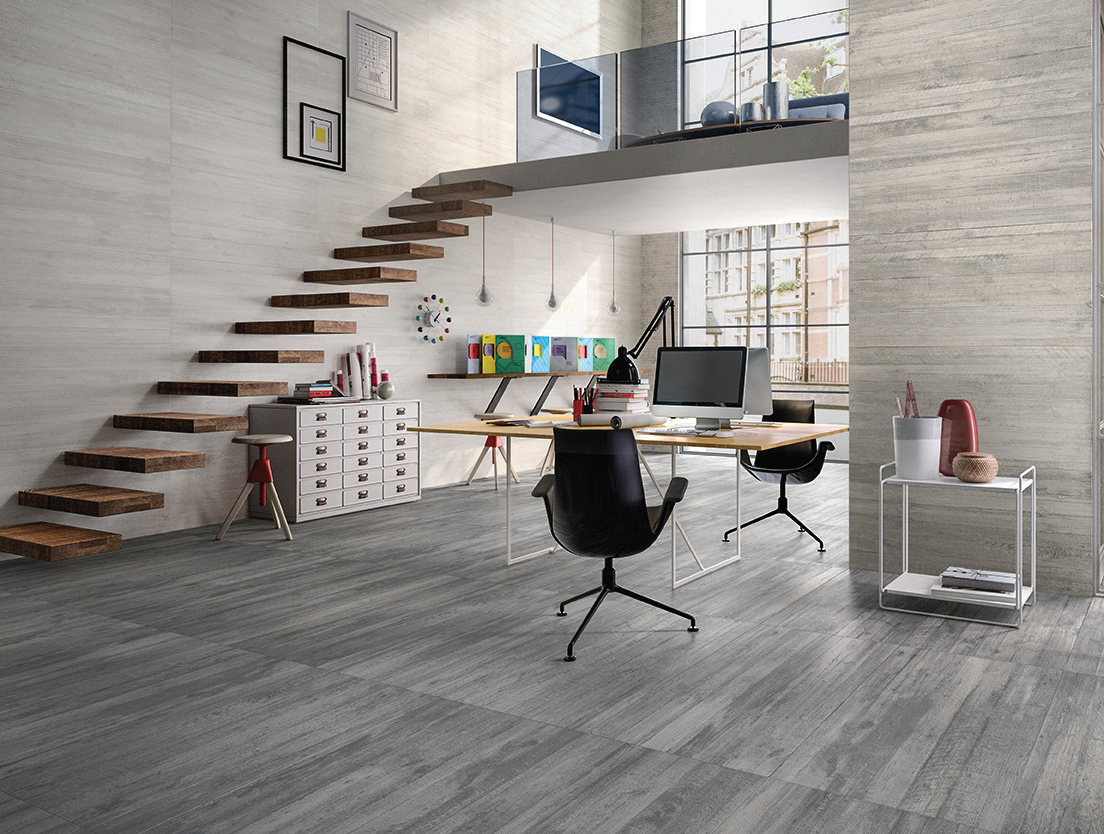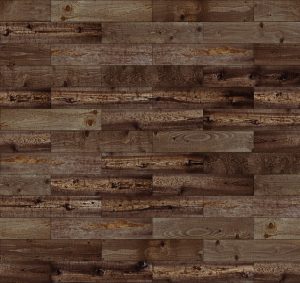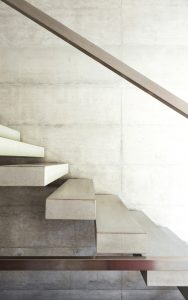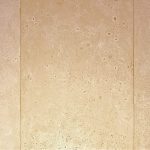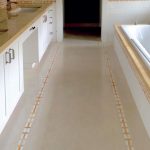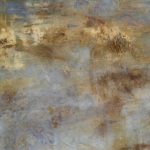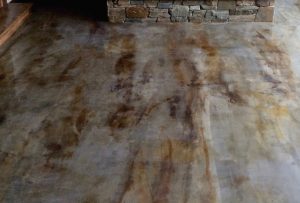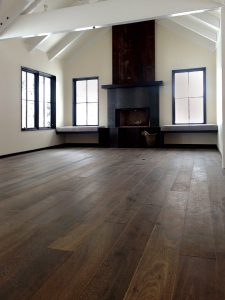
FLOORING AND CARPET OPTIONS BRING STYLE TO THE SURFACE
BY LISA CARTON & SARAH BETTS
Your style, that sense of what’s “right” in design and color, is re ected wall-to-wall throughout your home. It’s evident in your choice of furniture, your selection of artwork, in the lighting, and more, and that style lives and expresses itself from room to room, indoors and out.
That sense of your own personal aesthetic that drives your flooring options will impact your home’s interior beauty, its design, décor, comfort, livability, and upkeep.
But, a spectacular floor—whether made of artfully painted wood, stately houndstooth tiles, or even a stained concrete— will catch your eye at every step.
WOOD – CLASSIC, VERSATILE, AND DURABLE
Hardwood floors are commonplace in homes today, but this has not always been the case. In the early 1800s, hardwood floors were the domain of only some of the wealthiest homeowners. Prior to the development of side-matching technology in the 1880s, which created the tongue and groove formation found in most hardwood floors today, wood floors were custom crafted by hand and often took years to complete. Almost a century later, during which the popularity of hardwood floors boomed due to new milling technology and installation techniques that made the material more accessible, hardwood went back to a rarity as carpeting was approved as part of 30-year mortgages.
Today’s market has seen many advancements and stable growth in the hardwood flooring industry despite a tumultuous past. Robert Leahy, of Stromberg Moore Hardwoods located in the Wood River Valley, assures us that hardwood flooring is a worthwhile investment in the home and the health of its inhabitants and the environment. “The majority of the floors we sell are from Forest Stewardship Council-certifed lumber, ensuring the forests are sustainably harvested,” says Leahy. “Hardwood flooring, when maintained properly, will last the life of the home—it is rarely necessary to replace a wood floor. The floors can also be updated with trends or new ownership without having to be replaced.”
In addition to its sustainability, Leahy believes that maintenance is one of the biggest reasons people look to hardwood. “It’s easy to clean up spills, dirt, and grime from daily use,” says Robert, “and hardwood floors do not harbor dust and germs. While other flooring material may need to be replaced due to wear and tear, hardwood can be refinished and never goes out of style.”
As far as aesthetics go, hardwood floors are highly versatile and practically timeless. “Hardwood flooring can take a space from modern to rustic depending on the materials chosen,” Leahy explains, “from sourcing reclaimed flooring in random widths for a more rustic space, to wide- plank, vertical-grain wood for a more formal and modern look and feel.”
“Adding texture to a wood floor,” Leahy adds, “from wire-brushing, saw marks, or hand-distressing, will signi cantly alter the look and feel of a room as well.”
“AS TRENDS CHANGE, HARDWOOD FLOORING CAN BE REFINISHED FOR A COMPLETELY NEW LOOK AND FEEL. HARDWOOD FLOORING CAN BE REPAIRED AND REFINISHED WITHOUT THE ENVIRONMENTAL IMPACT OF BEING REPLACED.”–ROBERT LEAHY, STROMBERG MOORE HARDWOODS
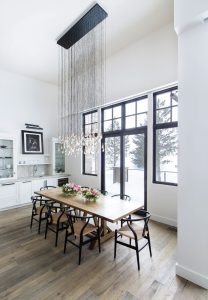
TRENDS IN HARDWOOD
One of the biggest benefits of using hardwood flooring is its capacity to be refinished. “As trends change,” says Leahy, “hardwood flooring can be refinished for a completely new look and feel. Hardwood flooring can be repaired and replenished without the environmental impact of being replaced.”
Additionally, Leahy and his colleagues are seeing a shift in the production of hardwood floors. “Mills are producing higher quality engineered floors with thicker wear layers and are using better glues and finishes,” Leahy says. “There is a greater variety of prefinished options with different types of finishes like penetrating oils and UV-cured urethane finishes with low-to-no VOCs.”
Penetrating oils, Leahy explains, have become more popular in the industry because they provide a very natural, soft look. European companies producing the oils are introducing more products to our markets as the trend continues. As far as shape and layout go, Leahy says the industry is trending toward wider-plank styles and longer- length boards.
CONCRETE –THIS EYE-CATCHING SURFACE IS EQUAL PARTS ART AND SCIENCE
Trendy, sleek, and durable, concrete flooring jumped from bare-bones utilitarian to modern chic in a New York minute. It’s not just for sidewalks anymore; with a little craftsmanship, concrete can be a stylish choice for indoor floors. Thanks to a multitude of color, texture, and finish possibilities, concrete lends itself to almost any décor.
“Concrete,” explains Jon Nasvik of Cliffhangers Inc, a decorative and functional concrete installation company based in Sun Valley, “which is what cement becomes when water and aggregates are mixed into it and a chemical reaction called hydration occurs, is one of our most versatile building materials. It can take limitless shapes, colors, and textures, can be made very porous (so much so that sunlight can even pass through, or so dense it can surpass granite in hardness.”One of the rst and most notable things people think about when shopping around for the right floor for their home is undeniably the look of the material. Nasvik feels that one of the bene ts of concrete is that it’s got an incredibly versatile look, and a lengthy list of other bene ts. “It comes in white and grey- green typically but can lean toward earthen browns, reds, and yellows, and can be colored by adding iron oxide pigments or man-made ones,” says Nasvik. “It can also be stained topically with a variety of choices to model the surface, so it lends itself beautifully to the creative process.”
There is a notable amount of artistic craftsmanship that goes into making concrete surfaces desirable for the home. An intricate series of mixing, adding dyes, laying the mixture, smoothing, polishing, painting and curing go into making the concrete surface uniquely suited to the desires of the homeowner. “Of course I have my own ideas about using concrete creatively and I like to experiment when I have time,” says Nasvik. “Most often though, making a business of decorative concrete work requires listening and making what the customer wants. Some customers know exactly what they want while others need to explore several samples and often enough make changes as they see the project unfold.”
CONCRETE TRENDS
Nasvik has seen a lot of trends come and go in the world of concrete, which is a relatively new player as far as indoor flooring materials go. “Right now,” says Nasvik, “the trends are for clean lines and a more contemporary look. People are liking the colors grey, brown, and white, but I also see some people going for bright red, green, yellow, and even metallic looks.”
According to Nasvik, another big change in the concrete market is the thickness of the floor. “Pouring concrete less than an inch thick has been a problem for a long time,” he says. “But because of customer requests, I’ve found a way to pour a thinner concrete flooring surface. This is really finice when carpet needs to be replaced with concrete. I’m able to provide a half-inch thick seamless slab that’s durable, easy to clean, and aesthetically pleasing.” This change helps Nasvik install concrete in home remodels without leaving a height differential in the floor throughout the rest of the home.
Concrete artisan Jon Nasvik of Cliffhangers says that people are trending toward more clean and contemporary and prefer whites, greys, and browns in their concrete choices.
THE FUNCTIONAL AND ENVIRONMENTAL APPEAL
Concrete is hypoallergenic, easy to clean, requires very little maintenance, is environmentally friendly, and can withstand a lot of wear and tear. For areas like Sun Valley, the surface is really appealing as both a green surface and a lasting one that adds a desirable look and feel to the home.
As a green building material, concrete’s appeal is in its sustainability; the longer a surface lasts, the lesser its impact, and concrete lasts a really long time. Concrete is incredibly durable, Nasvik explains, and hardly ever needs to be replaced. Concrete can also be recycled, and the surface cuts down on the need to discard waste, such as scraps of flooring and old materials, because it can be laid over old or unwanted surfaces. In the LEED program, concrete offers points toward green building certi cation. The use of non-toxic, water-based dyes and sealants in most concrete surfaces is of additional environmental bene t.
In addition to its sustainability, concrete requires signi cantly less energy to produce than other flooring materials, and can be made and poured locally, requiring less transportation energy. Furthermore, concrete helps create better indoor air quality for the home’s inhabitants because it inhibits mold, mildew, and odors, contains no potentially harmful VOCs (volatile organic compounds), and can be finished with zero-VOC sealers.
THERE IS A NOTABLE AMOUNT OF ARTISTIC CRAFTSMANSHIP THAT GOES INTO MAKING CONCRETE SURFACES DESIRABLE FOR THE HOME. AN INTRICATE SERIES OF MIXING, ADDING DYES, LAYING THE MIXTURE, SMOOTHING, POLISHING, PAINTING, AND CURING GO INTO MAKING THE CONCRETE SURFACE UNIQUELY SUITED TO THE DESIRES OF THE HOMEOWNER.
THE WARMTH OF CONCRETE
Although we traditionally think of concrete as a ‘cold’ material, it’s actually a great material for absorbing sunlight and dispersing that heat throughout the house. This is why many solar passive houses have concrete floors, explains Nasvik. Of course, concrete can appear aesthetically cold, but it can easily be warmed up by teaming it with warmer-looking materials and custom finishing.
Concrete also works well with radiant heating. The substance has a lot of thermal mass, meaning it absorbs and stores heat energy really well. This translates to a reduction in energy bills and finice, inviting, warm flooring for the home. The best bene t, as far as energy savings in the home go, is that concrete floors are great at staying warm when heated in the winter and keeping cool in the hotter months of summer.
NUMBER OF ELEMENTS NEED TO BE TAKEN INTO CONSIDERATION IN ORDER TO DETERMINE THE FLOORING THAT’S RIGHT FOR YOU. IN EXTREME CLIMATES LIKE THAT OF SUN VALLEY, THE QUALITY OF THE MATERIAL IS HIGHLY IMPORTANT IN ORDER TO ENSURE THE FLOOR WILL WITHSTAND BIG SWINGS IN TEMPERATURE AND MOISTURE CONTENT.
WORRY-FREE HOME DECOR
When you talk with Cori Brown of Summit Source in Salt Lake City, you’re immediately put at ease by the expert in all things flooring. After all, you’re making big decisions when it comes to what you’re putting in your home. “There are many worries when it comes to decorating your home. Will it look beautiful? Will it last? Will it be comfortable? When you are planning a project, big or small, these questions are bound to pop up,” says Brown, who has assisted home and business owners in the Valley to take the worry out of the design process for over 10 years.
WILL IT LAST?
How can you make sure your new décor will hold up? First, Brown stressed the need to be honest with yourself about your lifestyle. “If you have rambunctious kids and pets, you probably want to steer clear from all-white. You can, however, nd beautiful products that are durable and stain-resistant. Choose flooring products made of materials that resist spills and messes, as well as products with long-term warranties.”
Brown notes that the trend toward modern contemporary flooring continues to be very popular. “People are utilizing engineered hardwood floors which have a very strong appeal, and they really are indistinguishable from real wood. Builders also seem to prefer the pre-finished floors because it keeps a project on schedule, and the home doesn’t need to be shut down for the lengthy sanding and staining process.”
A FLOOR THAT’S FIT FOR YOU
There’s no one-size-fits-all answer for flooring, even as new materials come into play and seem to take center stage. A number of elements need to be taken into consideration in order to determine the flooring that’s right for you. In extreme climates like that of Sun Valley, the quality of the material is highly important in order to ensure the floor will withstand big swings in temperature and moisture content.
Thinking about the wear your floor will experience and the type of feel you want your space to have are important too. Wool, porcelain, and hardwood are the classic examples of materials that stand the test of time, but with many new technologies in the flooring market, there are other great contenders for long- lasting flooring materials such as concrete. Things to consider, given the many high-quality and long-lasting materials, include maintenance, cleaning, and appearance—the options are seemingly limitless.
What it comes to, and what many local flooring experts feel is most important, is nding a material that speaks to your lifestyle and needs as well as the desired character of the space.

